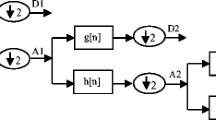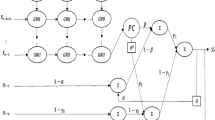Abstract
In this study, Elman recurrent neural networks have been defined by using conjugate gradient algorithm in order to determine the depth of anesthesia in the continuation stage of the anesthesia and to estimate the amount of medicine to be applied at that moment. The feed forward neural networks are also used for comparison. The conjugate gradient algorithm is compared with back propagation (BP) for training of the neural Networks. The applied artificial neural network is composed of three layers, namely the input layer, the hidden layer and the output layer. The nonlinear activation function sigmoid (sigmoid function) has been used in the hidden layer and the output layer. EEG data has been recorded with Nihon Kohden 9200 brand 22-channel EEG device. The international 8-channel bipolar 10–20 montage system (8 TB-b system) has been used in assembling the recording electrodes. EEG data have been recorded by being sampled once in every 2 milliseconds. The artificial neural network has been designed so as to have 60 neurons in the input layer, 30 neurons in the hidden layer and 1 neuron in the output layer. The values of the power spectral density (PSD) of 10-second EEG segments which correspond to the 1–50 Hz frequency range; the ratio of the total power of PSD values of the EEG segment at that moment in the same range to the total of PSD values of EEG segment taken prior to the anesthesia.






Similar content being viewed by others
References
Muthuswamy, J., and Roy, R. J., The use of fuzzy integrals and bispectral analysis of the electroencephalogram to predict movement under anesthesia. IEEE trans. biomed. eng. 46 (3)291–99, 1999.
Aydın, A., Çömelekoğlu, Ü., Koçak, Z., Özge, A., Atıcı, Ş., Oral, U., The hemodynamic effect of remifentanil on stress response to tracheal, intubation : correlations with quantitative EEG analysis. Bulletin of Clinical Psychopharmacology. 11(4). 2001.
Da Silva, L., EEG analysis: Theory and Practice. In: Niedermayer, E., and Da Silva, L. (Eds.), Electroencephalography basic principles, clinical applications, and related fields, 4th edition. Lippincott Williams & Wilkins, USA, pp. 1135–58, 1999.
James, C. J., Jones, R. D., Bones, P. J., and Carroll, G. J., Detection of epileptiform discharges in the EEG by a hybrid system comprising mimetic, self-organized artificial neural network, and fuzzy logic stages. J. Int. Fed Clin Neurophysiology. 110 (12)2049–2063, 1999.
Arıkan, M. K., psychiatric Electrophysiology, Lilly medicine stock company. publication, s. 14–20. 1998.
Iselin-Chaves, I. A., Flaishon, R., Sebel, P. S., et al., The effect of the interaction of Propofol and Alfentanil on recall, loss of consciousness, and the Bispectral index. Anesth. Analg. 87:949–955, 1998. doi:10.1097/00000539-199810000-00038.
Gotman, S. Y., Pasupathy, J., Flanagan, A., Rosenblatt, D., and Gottesman, B., An expert system for EEG monitoring in the pediatric intensive care unit. Electroencephalogr. clin. neurophysiol.. 106 (6)488–500, 1998.
Ortolani, O., Conti, A., Di Filippo, A., Adembri, C., Moraldi, E., Evangelisti, A., Maggini, M., and Roberts, S. J., EEG signal processing in anaesthesia. Use of a neural network technique for monitoring depth of anaesthesia. Br. J. Anaesth. 88 (5)644–648, 2002. doi:10.1093/bja/88.5.644.
Jiao, L., et al (eds.): Using Back Propagation Feedback Neural Networks and Recurrence Quantification Analysis of EEGs Predict Responses to Incision During Anesthesia, ICNC 2006, Part II, LNCS 4222, pp.364–373, 2006.
Riedmiller, M., Braun, H., A Direct Adaptive Method for Faster backpropagation learning: The RPROP Algorithm, Proceedings of the IEEE Int. Conf. On Neural Networks, San Francisco, CA, March 28, 1993.
Brent, R. P., Fast training algorithms for multi-layer neural nets. IEEE Trans. Neural Netw. 2:346–354, 1991. doi:10.1109/72.97911.
Hagan, M. T., Demuth, H. B., and Beale, M. H., Neural network design. Vol. 17(2). pp. 273–78, Boston, MA: PWS, 1996.
Temurtas, F., Gunturkun, R., Yumusak, N., and Temurtas, H., Harmonic detection using feed forward and recurrent neural networks for active filters. Electric Power. Syst. Res. 72:33–40, 2004.
Temurtas, F., Gunturkun, R., Yumusak, N., Temurtas, H., and Unsal, A., An application of elman’s recurrent neural networks to harmonic detection, IEA-AIE 04. Lect. Notes Artif. Intell. 3029:1043–1052, 2004.
Fletcher, R., and Reeves, C. M., Function minimization by conjugate gradients. Comput. J. 7:149–154, 1964. doi:10.1093/comjnl/7.2.149.
Author information
Authors and Affiliations
Corresponding author
Rights and permissions
About this article
Cite this article
Güntürkün, R. Using Elman Recurrent Neural Networks with Conjugate Gradient Algorithm in Determining the Anesthetic the Amount of Anesthetic Medicine to Be Applied. J Med Syst 34, 479–484 (2010). https://doi.org/10.1007/s10916-009-9260-2
Received:
Accepted:
Published:
Issue Date:
DOI: https://doi.org/10.1007/s10916-009-9260-2




